Introducing Arcana Chain Abstraction SDK
Offer Chain Abstraction Natively In Your App. A Unified Balance To Spend On Any Chain, Without Swapping, Bridging, Or Refuelling Gas
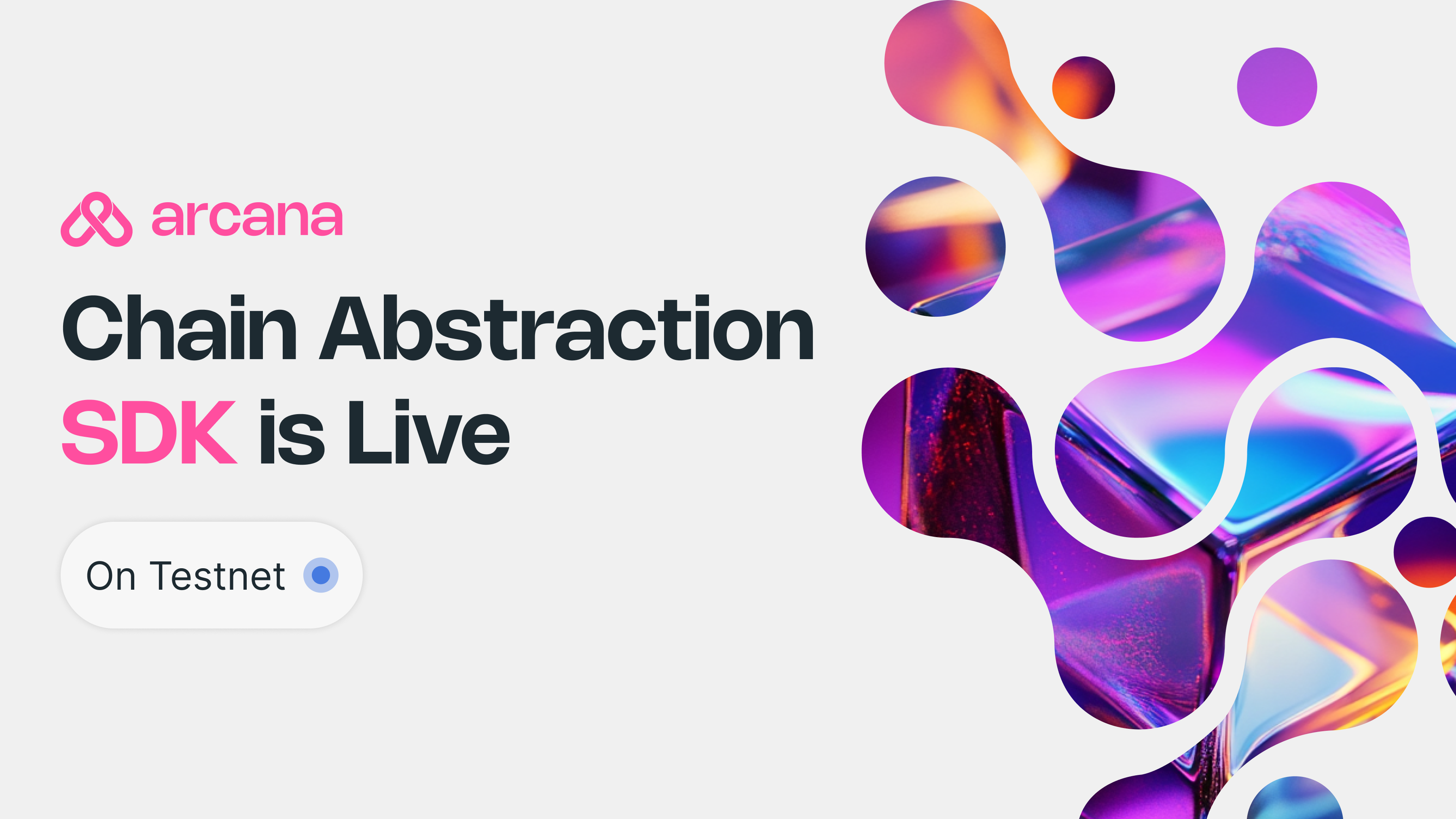
Building for users across chains is the future. Arcana’s Chain Abstraction SDK makes it simple to unlock that future today.
Dozens of Layer 1s, Layer 2s, Appchains, Sidechains, and Rollups have created a fragmented, complex, and high-friction experience for users and developers. Users are forced to switch chains, bridge assets, and manage fees. For developers, this adds overhead of supporting multiple chains and reduces the userbase they can cater to, greatly discouraging adoption of new chains and apps.
Chain Abstraction abstracts the complexities of using apps in a multi-chain world, removing the friction of users having to bridge across different blockchains to try apps.
Arcana’s Chain Abstraction protocol earlier launched Arcana Wallet as a Chrome extension to showcase a seamless, unified, chain abstracted experience on popular apps such as Aave, Uniswap, Cowswap, Jumper, Hyperliquid, and more.
We Are Excited To Announce The Launch Of Arcana's Chain Abstraction SDK
A Single Integration To Offer Chain Abstraction With Unified Balances Natively In Your App.
Users just need to connect their existing wallet to get a single, unified balance of their assets across multiple chains and can seamlessly spend them on your app, on the chain it is built on.
Here's a Demo of Our SDK in Action
Get started by trying out the SDK demo at sdk.arcana.network or jump straight into our docs at docs.arcana.network. The SDK is currently in Beta on Arcana Network's Testnet.
Arcana's Chain Abstraction Is A 10x Jump In User Experience For Web3-Native And Novice Users Alike
Unified Balance:
- Acquire users from any ecosystem. Apps exist on their chain of choice and attract users and assets across multiple chains. Users can spend an aggregated balance of assets across chains, on their chain of choice, without swapping or bridging.
Zero Friction:
- No smart contract upgrades or migration needed. Your apps exist on the chain they are built for. Easily integrate the SDK with minimal changes to your front-end code
- Bring Existing Wallets - Users do not have to transfer assets to a new address or lockup in a smart contract. They can bring their existing EOA wallets like MetaMask, Coinbase Wallet, Rabby etc.
Seamless Transactions:
- Flexible Gas payment - Gas fees can be paid in stablecoins like USDC and USDT.
- Near Instant Transactions - Powered by Arcana’s Modular L1 and Intent-Solver network for cross-chain execution, Transactions are executed in under 20 seconds.
- No vendor lock-in; users retain full custody of assets and can spend them on any app from their wallet.
We currently support chain abstraction for ETH, USDT, and USDC across Ethereum, Polygon, Arbitrum, Base, and Optimism, with support for more assets and chains on the way.
Get started with Arcana’s Chain Abstracted SDK on our Testnet, access is open to all developers.
How Does it Work?
The SDK is a Javascript SDK that can plug into any web3 app's front end with minimal changes.
The SDK is initialized with a provider once a wallet is connected, allowing developers to access chain abstraction-specific methods such as getting unified balances, transfer, bridge, etc. It supports EIP1193 providers and wallet adaptors.
Connect Wallet:
Connect any of your existing wallets such as Metamask, Rabby, Rainbow etc. The SDK fetches the unified balance of the connected wallet across supported chains. In the demo, the user has a unified USDC balance of 37 USDC held across 4 different chains
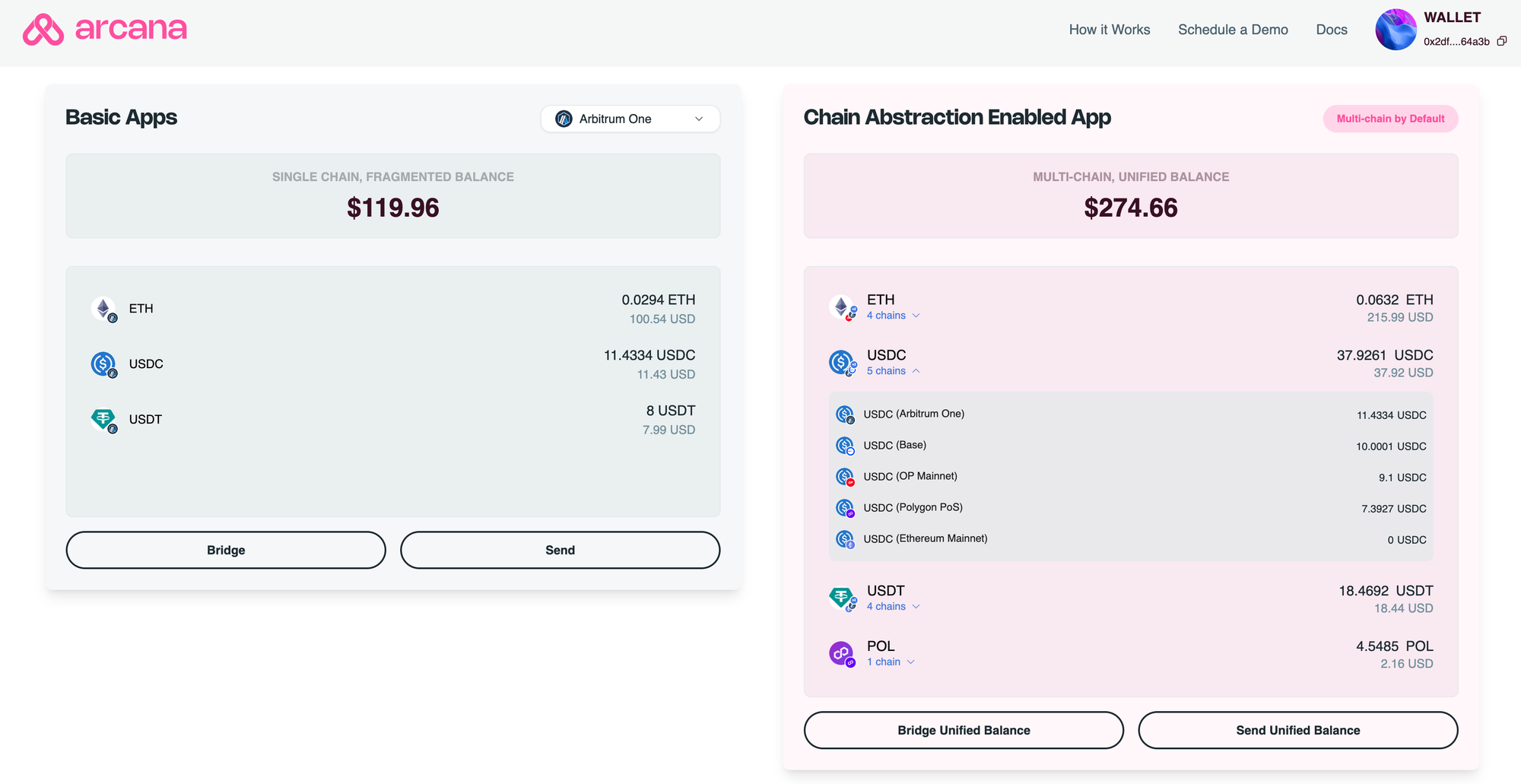
The demo app shows two types of balances:
- Basic Apps: Balance on a single chain that is typically shown to a user chain
- Chain Abstraction Enabled Apps: A Unified Balance of each asset across multiple that is made available through the SDK. The unified balance to be presented to the user is fully customisable by the developer.
Spend Balances:
You can experience spending the unified balance in the demo app through two flows:
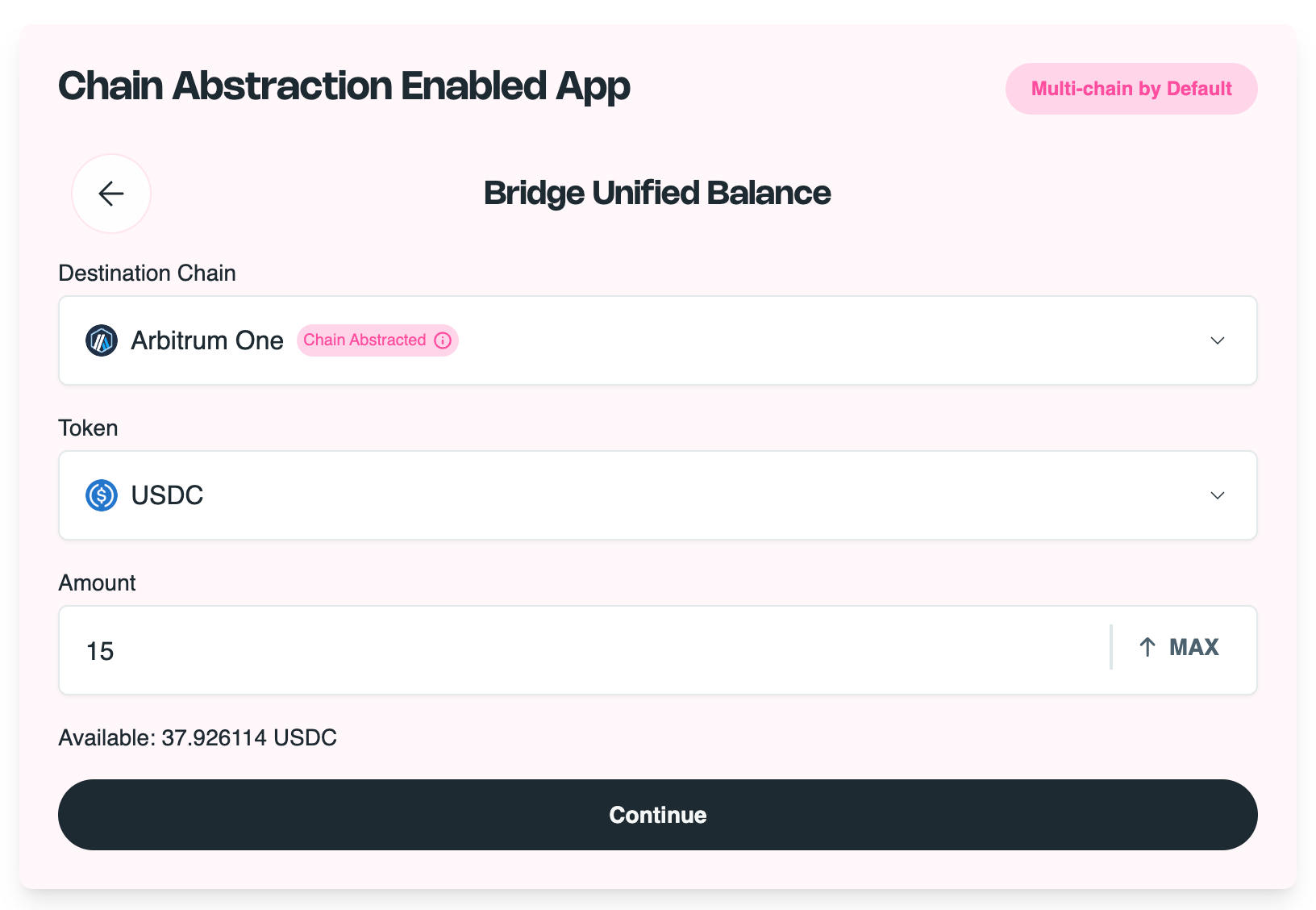
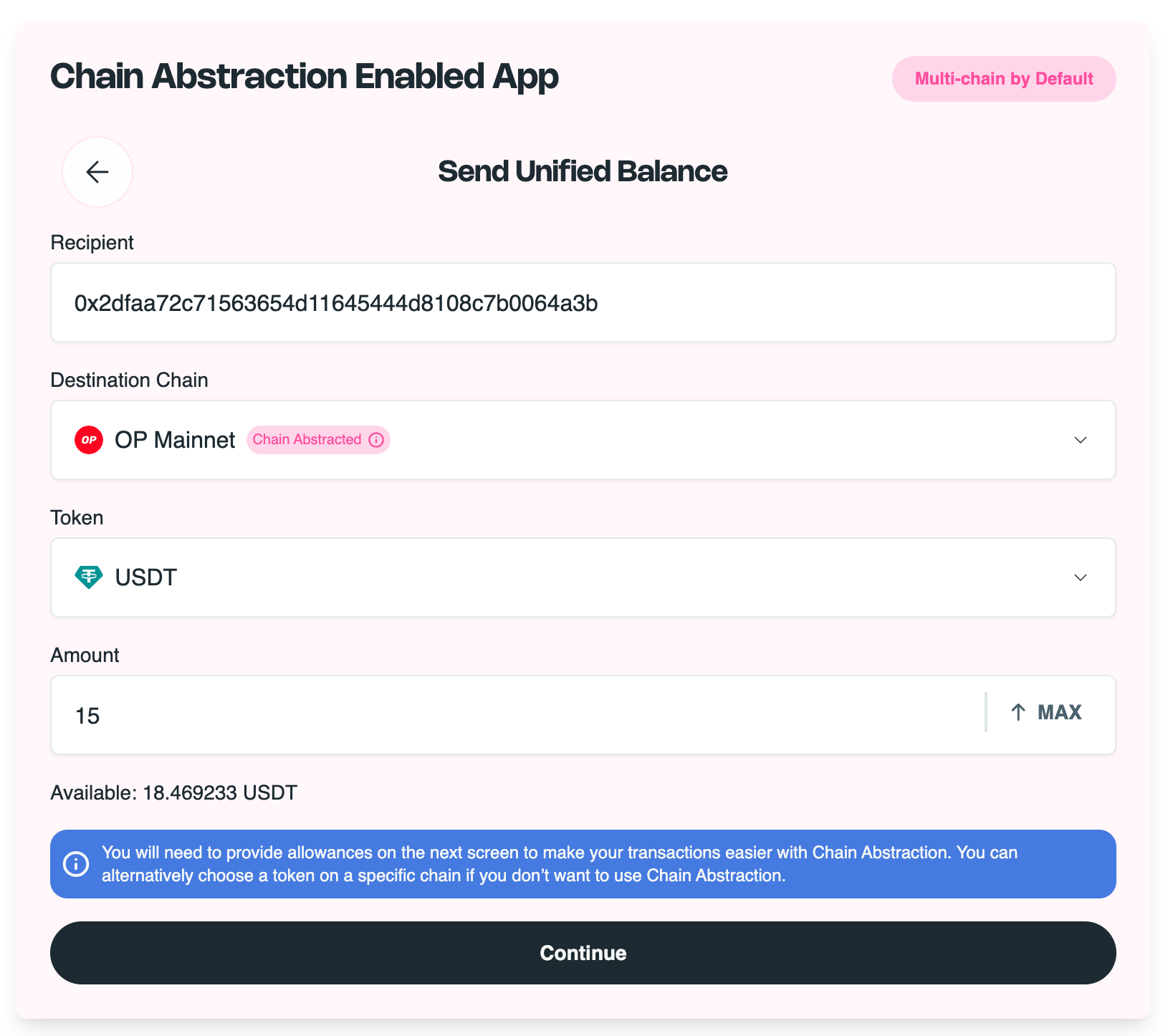
- Bridge Unified Balance: This allows you to consolidate your holdings across chains by moving your entire balance to a single chain.
- Send Unified Balance: This allows you to send assets from multiple chains to an address on the desired chain.
These are just examples in the demo app and the transaction can be of any type: swap, deposit, buy, stake etc
Let's go through the flow of sending a unified USDC balance to an address on Arbitrum: The user has a unified balance of 37 USDC and wants to send 15 USDC on Arbitrum
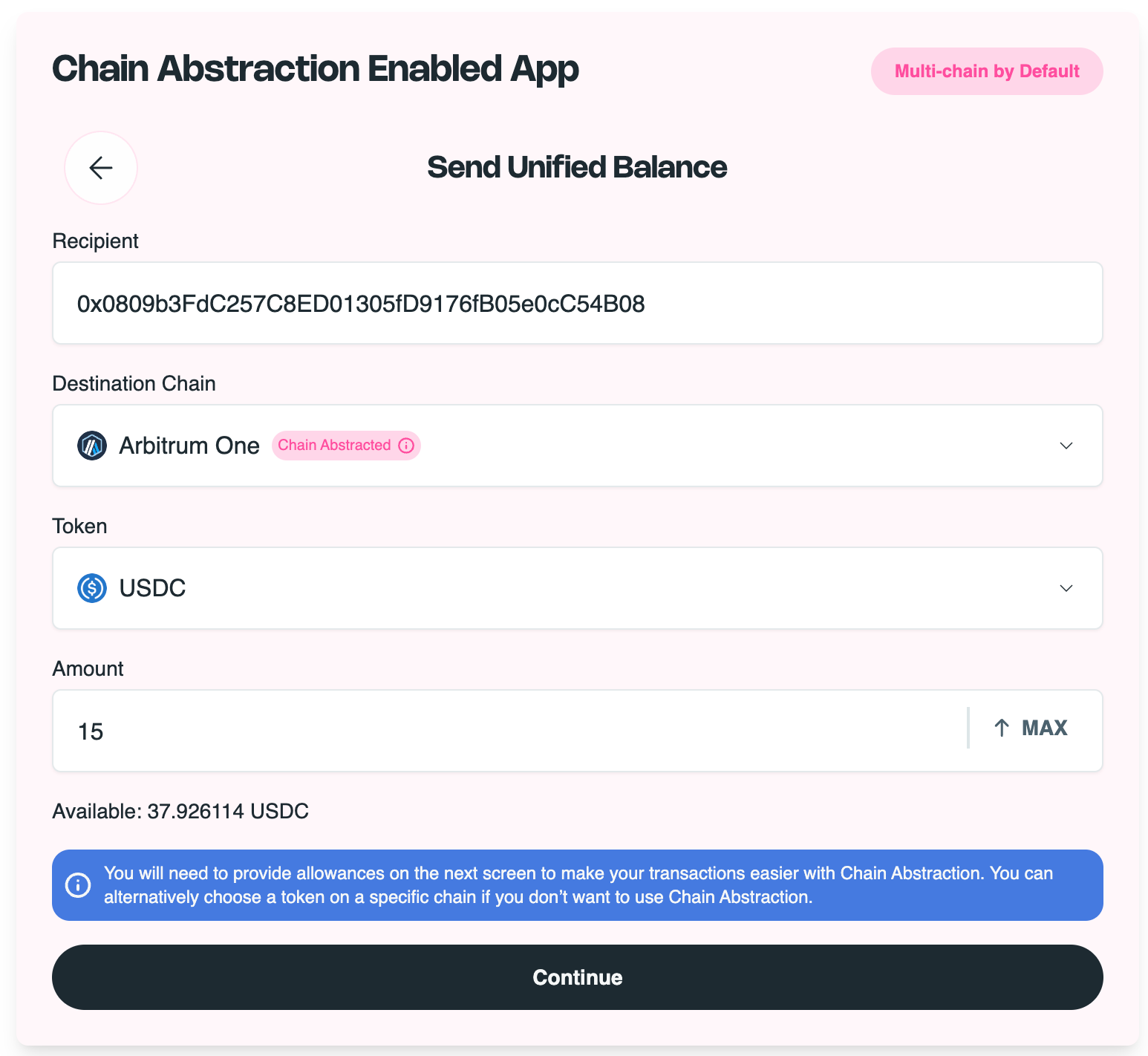
Set Allowance:
Check if the user has set allowances for specific chains and tokens and request the allowance setup through the hooks offered in the SDK. These allowances can also be checked at run time when the user performs a transaction by creating an intent.
Intent Overview:
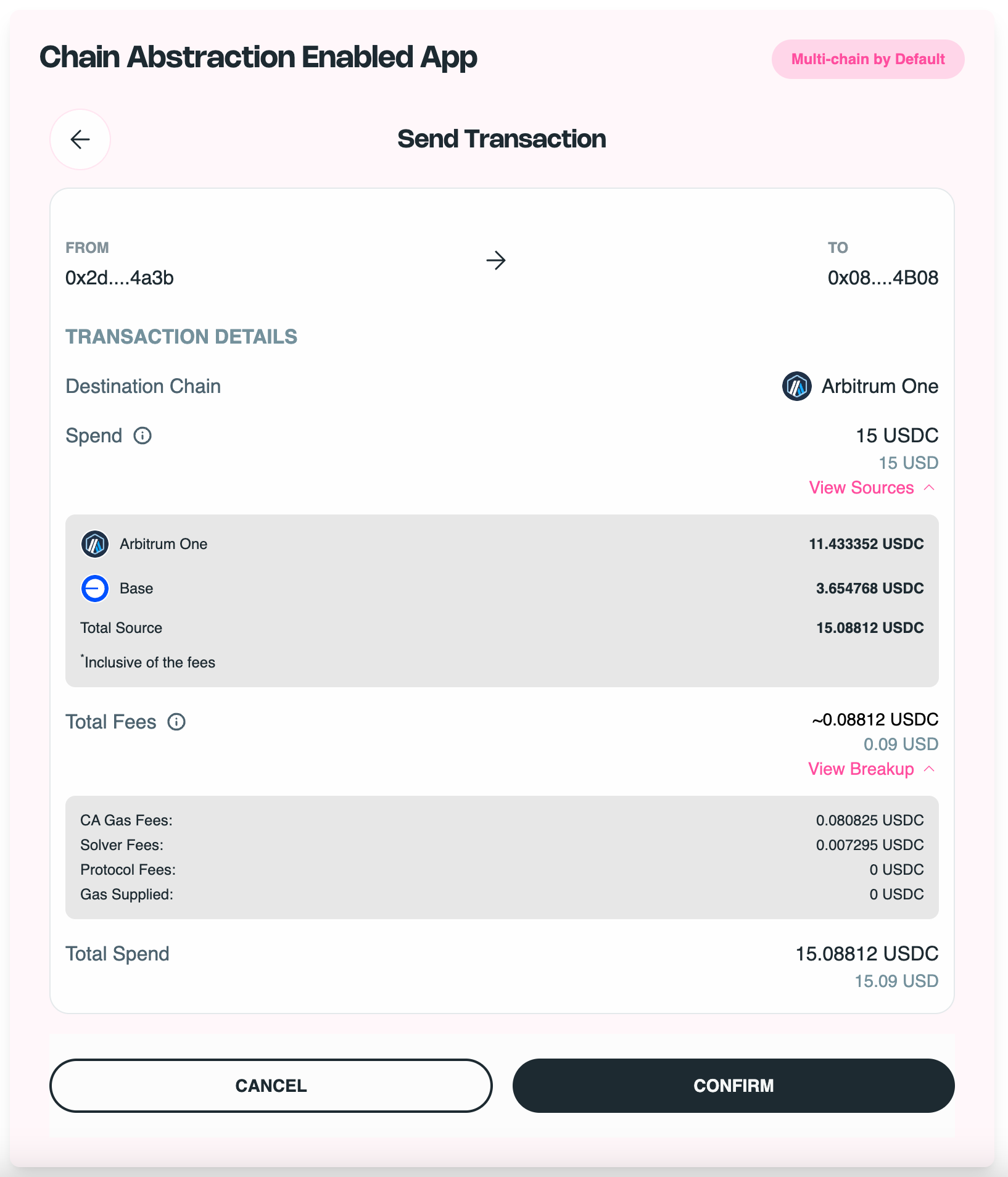
- The user has a unified balance of 37 USDC and wants to send 15 USDC to another address on Arbitrum, but they only have 11.4 USDC on Arbitrum, but you don't need to worry about it. You specify the action you want to perform to SDK, which is to transfer 15 USDC to an address on the Arbitrum chain and the SDK will orchestrate the transactions that need to be executed.
- The SDK returns the details of the intent the user needs to approve to execute the transaction, with the list of sources the USDC will be collected from and the corresponding fees. In this example, the missing ~3 USDC will be collected from base and .08 USDC in fees will be charged
- Sources: The list of chains from which the missing USDC will be collected to send on the Arbitrum chain
- Fees:
- Gas fees incurred for chain abstraction
- Solver fees charged by solvers offering the required USDC on the desired chain
- Protocol fees charged by the network for enabling chain abstraction
- Fees in USDC for supplying native gas tokens to the user if the user doesn't hold native tokens such as ETH
Sign Transaction:
- The user is asked to switch to the destination chain, Arbitrum
- The user signs the intent for verification by Arcana Network
Intent and Tx Status Overview:
The SDK returns an overview of the status of each step in the orchestration flow.
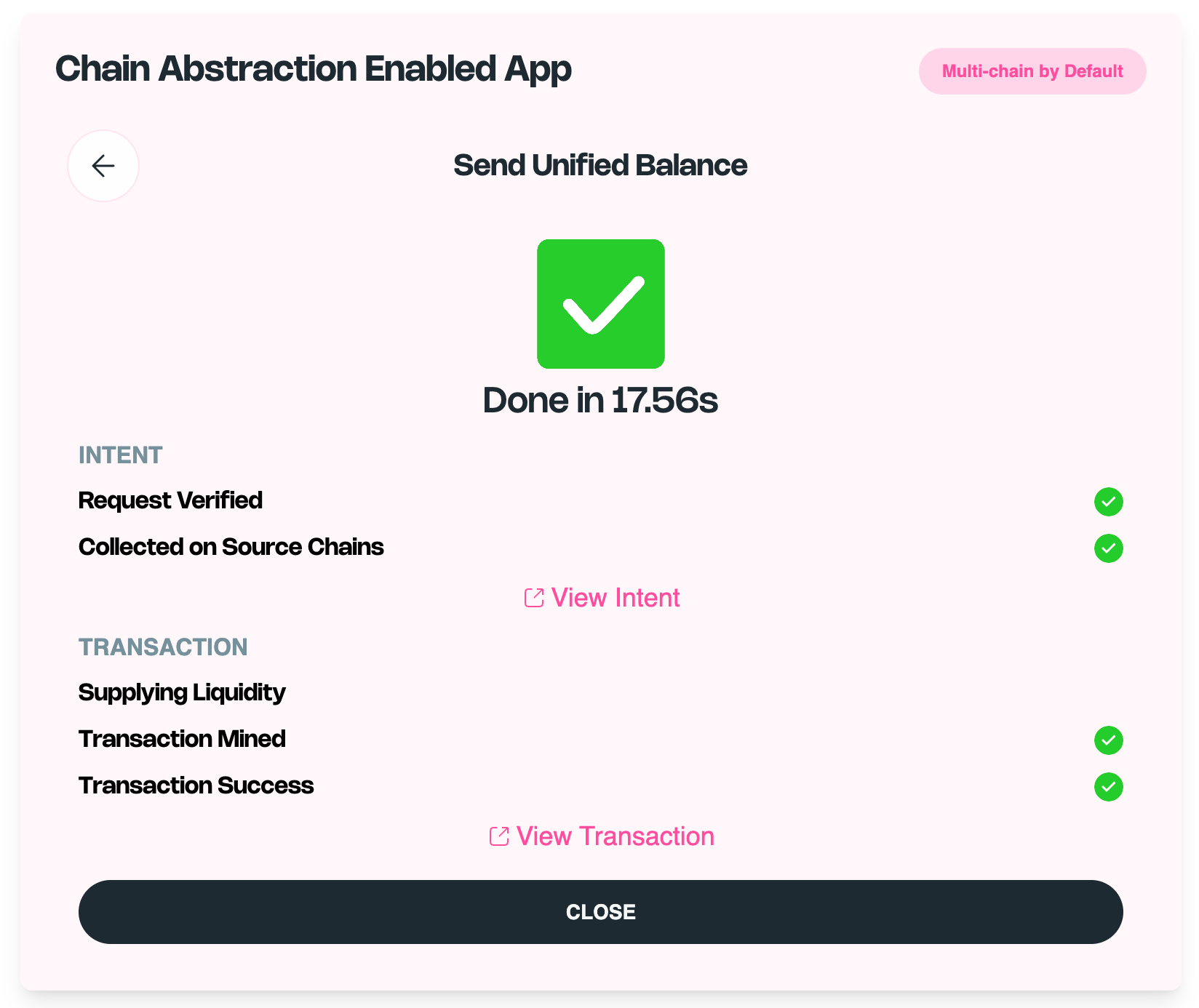
The protocol collects the funds from the source chains and notifies the solvers. Solvers holding USDC on Arbitrum transfer the USDC to the user's address. Once the USDC is supplied, the user confirms the final transaction to transfer the USDC to their desired address. All in a couple of clicks and under 20 seconds.
Integrate Arcana's Chain Abstraction SDK today to give your users this seamless, multi-chain experience that they deserve.
Chain abstraction has become essential—not just optional—for the next generation of Web3 apps. With the launch of our SDK, we're thrilled to enable new possibilities for developers and users across ecosystems while moving toward Arcana Network's Mainnet launch in Q1 2025.
Feel free to reach out to us if you have feedback or need help to get started

